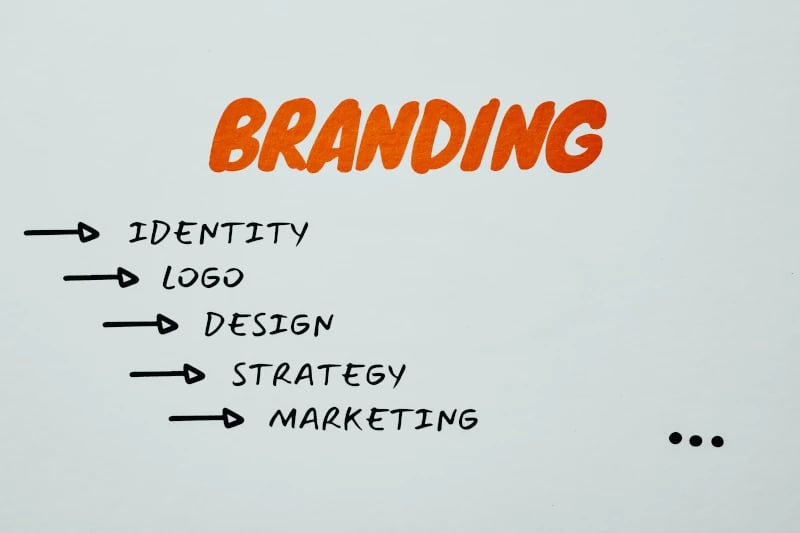Brand refresh - how to update your brand to stay relevant
In today's fast-paced and ever-changing business world, a brand's ability to adapt is critical to staying relevant. No matter how successful a company starts, without regular brand review and adaptation, it can easily fade into obscurity.
Consider some of the most recognizable brands of our time. They've all changed over the years, updating their messages, logos, and products to meet the changing needs and expectations of their target audiences. This is no accident, but the result of a conscious strategic decision: the so-called "brand refresh". In this article, we'll look at the following aspects:
- What is a brand refresh?
- Why is a brand refresh so important?
- Brand refresh vs. rebranding
- The brand refresh process
- What does a successful brand refresh look like?
- Example brand refresh
- Brand refresh with empower®
What is a brand refresh?
A brand refresh is a strategic process in which a company revises its brand's visual elements, messaging, and/or strategic direction to make it more contemporary and relevant to its target audience. Essentially, it's an evolution of the brand without completely changing its fundamental identity. A brand refresh can relate to various aspects of a brand: visual rebranding, brand messaging, product or service offering, customer experience, values and purpose, or marketing strategy.
Why is a brand refresh so important?
The answer is simple: because markets and customers change. What's hot today may be obsolete tomorrow. But that doesn't mean you need to completely reinvent your brand. Rather, it's about preserving the core of your brand while adapting it to shine in today's competitive environment.
Deciding when to conduct a brand refresh depends on a number of factors and varies from case to case. However, some clear signs and events indicate the need for a brand refresh:
- Changing market conditions
- Outdated corporate design
- Lack of impact of your messages
- Loss of customers
- Mergers and acquisitions
- Anniversaries or milestones
- Customer and employee feedback
- Loss of unique selling propositions
- Technological progress
- Competition
Brand refresh vs. rebranding
A brand refresh aims to update and modernize the existing brand identity and positioning without changing the fundamental identity of the brand. The goal is to make the brand more contemporary and relevant. It typically involves limited changes such as updating the logo, color palette, fonts, brand messaging, or visual identity. The brand retains its basic identity and existing brand recognition. Current customers should continue to recognize and identify with the brand.

Rebranding is a more comprehensive process in which the brand is redesigned in many ways. The goal of rebranding is often a broader change in brand identity to achieve a new direction or positioning.
Rebranding can involve profound changes, including the introduction of a new name, a new logo, a new corporate culture, new products or services, and even a new target audience. In contrast to a brand refresh, a rebrand can involve the wholesale abandonment of the brand's previous identity and recognition. This can result in the brand being almost unrecognizable to existing customers. Rebranding is usually a major strategic decision and is often undertaken when a company is undergoing a dramatic change in direction, such as a merger, acquisition, or serious image problem.
The brand refresh process
In order to perform a brand refresh, it makes sense to follow a certain sequence of steps so that the process doesn't end in chaos. A recommended process might look like this:
1. Analysis and research
- Market analysis: Study the current market, competition, and industry trends to understand how the brand can be positioned in its business and cultural environments.
- Customer feedback: Gather feedback from existing customers to better understand their needs and expectations.
- Competitor analysis: Study the activities and successes of competitors to identify opportunities and challenges.
2. Set goals
Establish clear goals and metrics that you want to achieve with the brand refresh. These can be goals such as increased brand awareness, customer loyalty, increased sales, or new market segments. Define performance indicators that will help you monitor the success of your refresh.
3. Define the branding elements to be changed
In this step, you might revise your logo or visual identity to create a new look and feel. Throughout the process, keep your current brand values in mind to ensure that they still align with your business strategy after the brand refresh.
4. Plan for brand communication
Develop a comprehensive brand communications plan, including new messages and visuals across multiple media and channels.
5. Implementation
Implement planned changes to visual identity, website, marketing materials and campaigns, and other relevant areas.
6. Market launch
Announce the brand refresh to the public and your target audience. This can be done through press releases, social media posts, newsletters, and other communication tools. Integrate the refresh into all relevant business areas and processes.
7. Feedback
Gather customer feedback after launch to ensure changes are well received and make adjustments as needed.
8. Measure success
Monitor and measure performance indicators established at the outset to ensure goals are being met.
9. Adaptation and constant change
Based on the data collected and customer feedback, make any adjustments needed to ensure the success of the brand refresh. The brand should continue to evolve and adapt to changing market conditions.
What does a successful brand refresh look like?

The success of a brand refresh can be measured in several ways, depending on the specific goals and indicators you set at the beginning of the process. In general, if you meet or exceed the goals you set at the beginning, that's a clear sign of success. Below are some specific indicators and metrics that can help you measure the success of your brand refresh:
- If your goal is to increase your brand's visibility, you can measure success through increased brand awareness, increased website visits, or increased social media traffic.
- Increased customer loyalty and satisfaction indicate that your brand resonates better with your target audience after the refresh. You can measure this through surveys, customer reviews, or repeat purchases.
- If your main goal is to increase sales, compare sales before and after the brand refresh.
- If customers and users react positively to changes and express this in comments and ratings, this is a good sign of success.
- An increase in new customers or users after the brand refresh may indicate an increase in the attractiveness of your brand.
- If you've invested financial resources in the brand refresh, you should monitor the ROI to ensure that the investment is having a positive impact on your business.
- If your goal is to improve your position in your industry, you can measure your success by the extent to which you have gained market share or improved your competitive position.
- Employees should embrace and identify with the new brand. An increase in employee satisfaction and motivation can be an indicator of the success of the brand refresh.
- Increased media exposure, positive coverage and increased interest from journalists may indicate the success of the brand refresh.
It's important not to judge the success of a brand refresh based on a single metric. Instead, you need to consider multiple indicators. It's also important to monitor progress on a regular basis. Adjust as needed to ensure the long-term success of the brand.
Example brand refresh: changes in the Starbucks logo
The Starbucks coffeehouse chain has undergone many brand refreshes in its 52-year history. Most have involved changing or evolving the logo. The company was named after the first mate of the ship Moby Dick, so the original logo was given a maritime touch. The choice was a siren from Greek mythology, whose song lures sailors to their doom. The siren, along with the words "Starbucks," "Coffee," "Tea," and "Spices," appeared in white on a brown background.

After several updates, the logo now consists of the white face of the siren on a green background without any text. This makes the logo simpler and more scalable. Starbucks wants to appeal to a global audience so removing English words internationalizes the logo effortlessly.

Source: medium.com
Brand refresh with empower® Brand Control
If you think a brand refresh might be right for your company, we have another tip for you. Let's say, like Starbucks, you've given your logo a fresh coat of paint and communicated the brand refresh to your audiences and stakeholders. But that's not the end of the process. Next, you need to update all existing documents, presentations, etc., and ensure that all new content reflects the logo. This can be a daunting task, especially for larger organizations.
That's where empower® comes in. With empower® Brand Control, your existing Microsoft documents and presentations can be automatically converted to a new design. This saves countless hours of tedious formatting work and strengthens your brand because the new logo and look are applied immediately. Even when you create a new document or presentation, your new branding, including your logo, is already integrated into the Microsoft Office applications.
Still have questions? Feel free to contact us - we will be glad to help you!
You May Also Like
Related articles

Brand investment: why you should start investing in your brand now

Brand transformation: How Frontify and empower support Brenntag’s relaunch


